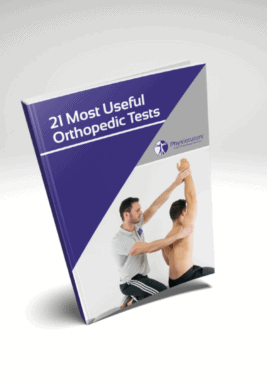Learn
Flexion Rotation Test | Upper Cervical Hypomobility Assessment
The flexion-rotation test is a useful tool to assist in identifying upper cervical movement impairment. This is especially important for patients that experience cervicogenic headaches due to impaired upper cervical joint dysfunction.
According to Hall et al. (2010), the FRT has an almost perfect intra-rater reliability of 0.95-0.97 and minimal detectable change of 7° if both sides are compared.
Ogince et al. (2007) describe a high sensitivity of 91% and a specificity of 90% in identifying individuals with cervicogenic headaches.
To perform the test, have your patient in supine-lying position and bring the cervical spine into maximal flexion. Then rotate your patient’s head to the left and to the right until you reach end-range, which is usually reached at an average of 44° in healthy individuals. Range of motion can hereby be limited by either pain or firm resistance encountered by the physio.
This test is deemed positive in clinical practice if there is a reduction of a visual estimate of 10° from the anticipated normal range of 44°, which is slightly higher than the minimal detectable change.
If you find a limitation in upper cervical rotation, you still won’t know which segment is the one responsible for this hypomobility.
Check out our blog on upper cervical PIVMs to learn how to assess each upper cervical segment indidivually.
21 OF THE MOST USEFUL ORTHOPAEDIC TESTS IN CLINICAL PRACTICE

References
Like what you’re learning?
BUY THE FULL PHYSIOTUTORS ASSESSMENT BOOK
- 600+ Pages e-Book
- Interactive Content (Direct Video Demonstration, PubMed articles)
- Statistical Values for all Special Tests from the latest research
- Available in 🇬🇧 🇩🇪 🇫🇷 🇪🇸 🇮🇹 🇵🇹 🇹🇷
- And much more!








